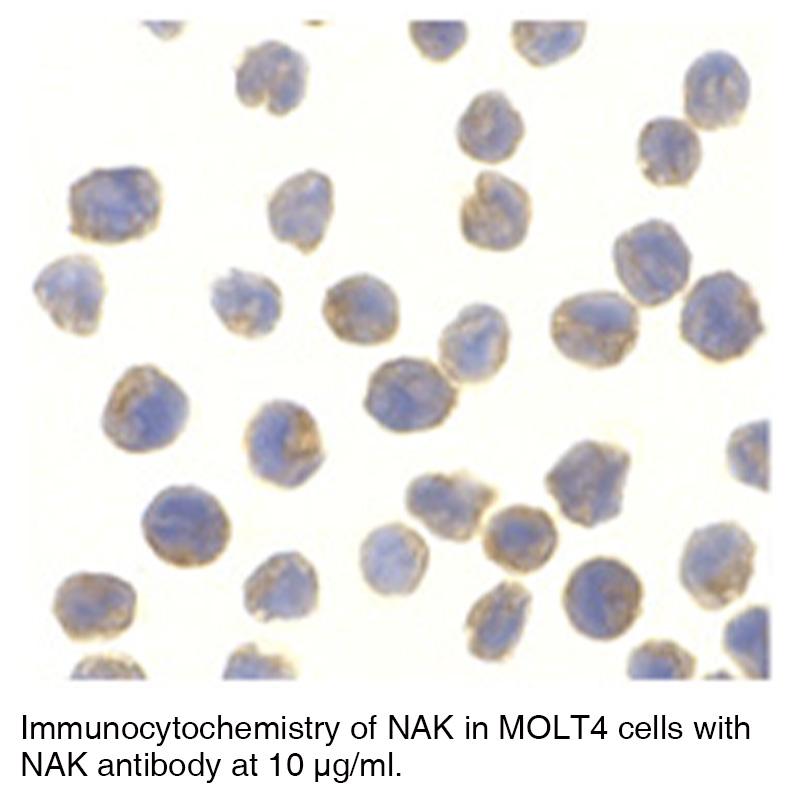Anti-Human NF-κB Activating Kinase (CT) (NAK)
Data
- -
- -
Antibody DetailsProduct DetailsReactive Species Human Host Species Rabbit Immunogen PN:N151 Product Concentration 0.5 mg/ml Formulation This polyclonal antibody is formulated in phosphate buffered saline (PBS) pH 7.4 containing 0.02% sodium azide as a preservative. Storage and Handling This polyclonal antibody is stable for at least one week when stored at 2-8°C. For long term storage, aliquot in working volumes without diluting and store at –20°C in a manual defrost freezer. Avoid Repeated Freeze Thaw Cycles. Country of Origin USA Shipping Next Day Ambient RRIDAB_2831398 Each investigator should determine their own optimal working dilution for specific applications. See directions on lot specific datasheets, as information may periodically change. DescriptionDescriptionSpecificity Rabbit Anti-Human NF-κB Activating Kinase (NAK) recognizes an epitope near the C-terminus of Human and Mouse NAK. This polyclonal antibody was purified using affinity chromatography. Background Nuclear factor kappa B (NF-κB) is a ubiquitous transcription factor and an essential mediator of gene expression during activation of immune and inflammatory responses. NF-κB mediates the expression of a great variety of genes in response to extracellular stimuli. NF-κB is associated with IκB proteins in the cell cytoplasm, which inhibit NF-κB activity. Phosphorylation of I-κB by IκB kinase (IKK) complex leads to degradation of I-κB and activation of NF-κB. The IKK complex contains IKKα, IKKβ, and IKKγ. A novel IKK related kinase was recently identified and designated TBK1 (TANK-binding kinase 1), NAK (NF-κB-activating kinase), and T2K.1-3 NAK/TBK1 activates IKKβ through direct phosphorylation. NAK/TBK1 is activated by growth factors and PMA and mediates IKK and NF-κB activation in response to growth factors.2 NAK/TBK1 functions upstream of NIK and the IKK complex.1,2 NAK/TBK1 is also critical in protecting embryonic liver from apoptosis.3 PubMed References & Citations1. Pomerantz, JL. et al. (1999) EMBO J. 18(23):6694 2. Tojima, Y. et al. (2000) Nature 404(6779):778 3. Bonnard, M. et al. (2000) EMBO J. 19(18):4976 Technical ProtocolsCertificate of Analysis |
Related Products
- -
- -
Prod No. | Description |
|---|---|
N130 | |
N133 |
 Products are for research use only. Not for use in diagnostic or therapeutic procedures.
Products are for research use only. Not for use in diagnostic or therapeutic procedures.



